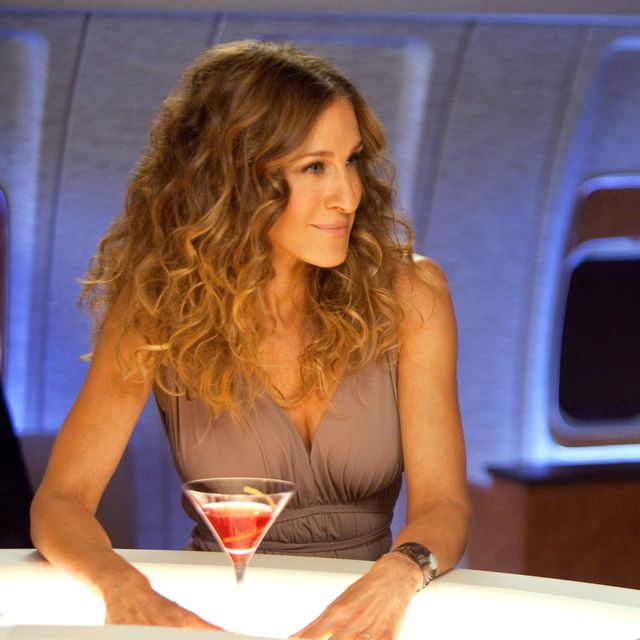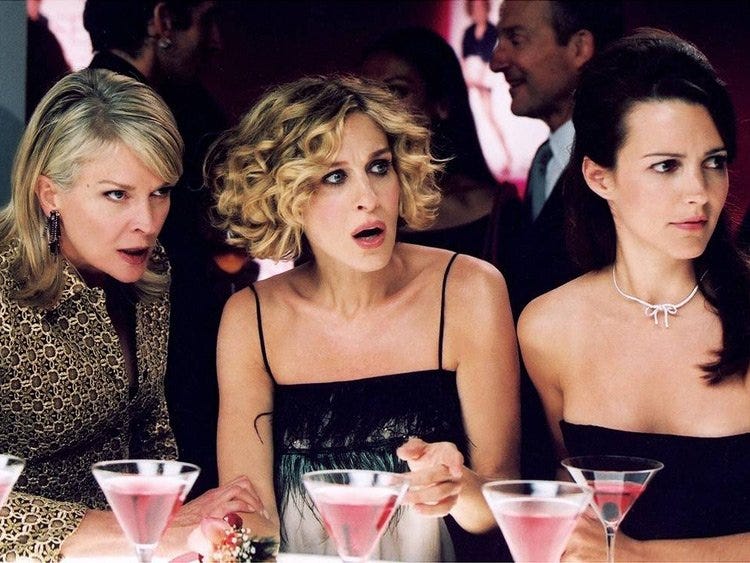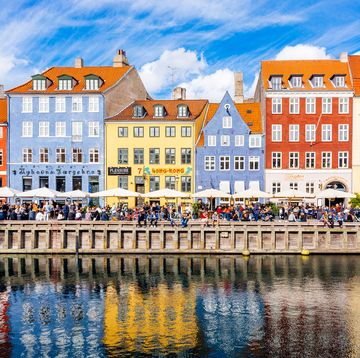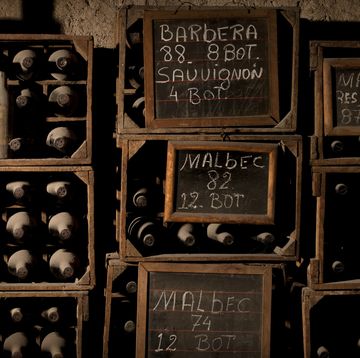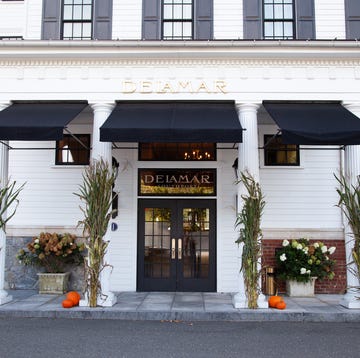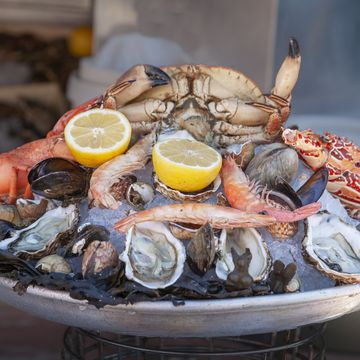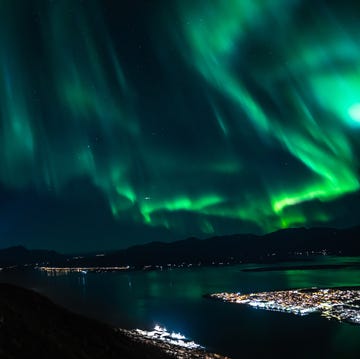Love it or hate it, Sex and the City is an undeniable fixture of the late ’90s and early aughts, and its 2021 revival—and reception thereof—a testament to the power of nostalgia for that era. The same can be said for the show’s mascot: the cosmopolitan, a neoclassic New York City drink in the throes of a resurgence alongside its four most iconic drinkers. But if you ask its creator, the cosmo never quite left.
“Good drinks wax and wane over time, sometimes goosed by current media, as with the old-fashioned after Mad Men came out,” says Toby Cecchini, who originally concocted the cosmopolitan while working at TriBeCa hot spot The Odeon in 1988, 10 years before the first episode of Sex and the City aired. The cosmo as we know it is his improved version of a mixed drink that was popular in San Francisco gay bars at the time, originally calling for rail vodka, Rose’s lime juice, and grenadine. Cecchini swapped in Absolut Citron vodka, fresh lime juice, Cointreau (an orange-flavored liqueur), and Ocean Spray cranberry juice, and the drink took the city by storm. Since then, Cecchini adds, its popularity has wavered, but it’s never stopped symbolizing a night out with the girls.
It’s unclear how the cosmo ended up on SATC a decade after it initially hit New York’s bars, but Cecchini has an idea. “Candace Bushnell was a pretty permanent fixture at places like Elaine’s in New York during the ’90s, and so would have been exposed to the drink in its initial flair of fame here in New York City. From the time I invented it in 1988 until its mad popularity here naturally waned, maybe three to five years later, she certainly would, like anyone here on the scene, have crossed it many times,” he tells me. Bushnell began writing the New York Observer column on which the show was based in 1994. It would have been a natural choice for her to identify the pale-pink cocktail as “the signifier of Carrie and her crew’s cognoscenti status as insider New Yorkers,” Cecchini explains, despite the fact that city dwellers were “yawning at the thought of a cosmo by the time the series came out.”
Just like any fashion trend, drinks tend to get a bad rap after they naturally descend from initial stardom. And wWhen the Cosmo fell from grace, it really fell from grace, earning derision from disenchanted bartenders and barflies alike, especially in an era that placed heavy emphasis on the “gender” of cocktails—the fact that no cishet man would be caught dead drinking something as “girly” as a Cosmo only exacerbated society’s rejection of it. To Cecchini’s point, the Mad Men school of classic cocktails (e.g. the Old Fashioned, Whiskey Sour, and Gibson) experienced a pop culture-fueled moment in the spotlight similar to (and right after) that of the Cosmo, further burying our little pink drink under a misguided and widespread adoption of hyper-masculine energy.
But the real cosmopolitan, which is a soft, placid shade of blush when made correctly (in contrast to the hot-pink martini we tend to see on TV), is a damn good drink. First of all, it’s balanced, which is a key factor in what constitutes a quality cocktail and is a somewhat objective characteristic, meaning it’s something we can agree on, whether or not we actually like how the drink tastes. Furthermore, Cecchini’s cosmo is a combination of flavors that’s hard not to love: bright citrus, a hint of cran, and pops of orange zest braced by vodka, the virtually flavorless chameleon of spirits. I personally would never turn one down.
“If I’m being honest, guests never stopped ordering the cosmo,” shares Estelle Bossy, beverage director for Panorama Room at the Graduate Roosevelt Island. Bossy and I originally met years ago when she ran the bar at a rather posh restaurant in Chelsea. (I, a recent graduate of the nearby Fashion Institute of Technology, fancied myself a regular baby Carrie walking into a place like that and treating myself to a cocktail that I could barely afford.) Bossy tells me that over the past few years, the school of cocktails considered “nostalgic” (read: passé and potentially ironic, like the espresso martini, Long Island iced tea, Midori sour, and arguably the cosmo) is back in fashion, thanks to a collective shift in judgment and appreciation within the bartending community that came after a period of reflection during the COVID-19 lockdowns. “As we reevaluated so many habitual modes of thinking, our concept of classic cocktails evolved beyond a short list of recipes dating from the late 1800s to a broader group of beverages that are more universal and relatable,” she shares. “A balance of just four ingredients, the cosmo itself was never the problem, but our snobbery toward it was.”
As we grow and evolve, our cultural icons in their various forms—be they human or in a martini glass—change in tandem with us. And Just Like That… is, in some ways, a story about that kind of shifting perspective, as the characters grapple with who they’ve become in their 50s. The meta-narrative around the show evokes that feeling of change, too: The first episode had barely dropped when the sexual assault allegations against Chris Noth were revealed, bringing with them an all-too-familiar sinking feeling that nothing is sacred. And the glaring absence of Kim Cattrall is a weekly reminder that the onscreen friendships weren’t exactly reflected in real life. The cosmo in 2022 might not represent what it did in 1988, or 1999, but that’s okay—we’re not who we were back then either. We’ve all seen some shit at this point. Sometimes, you just have to step back and appreciate a good thing.
